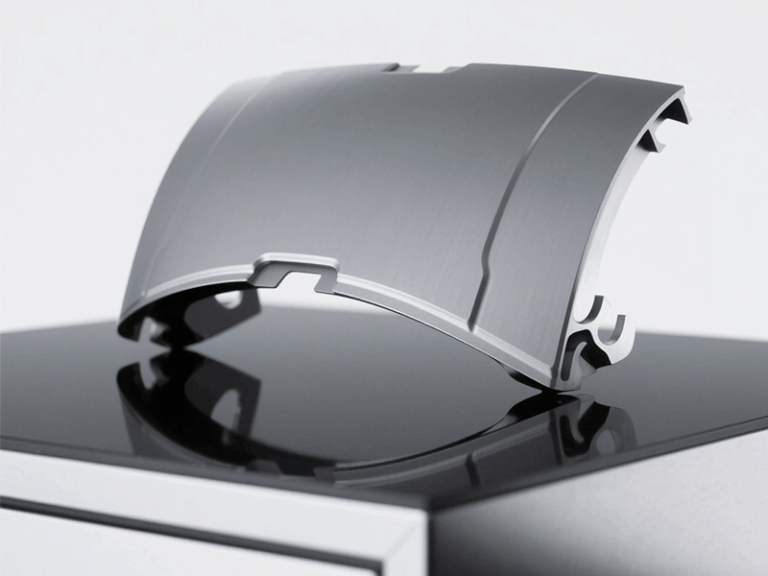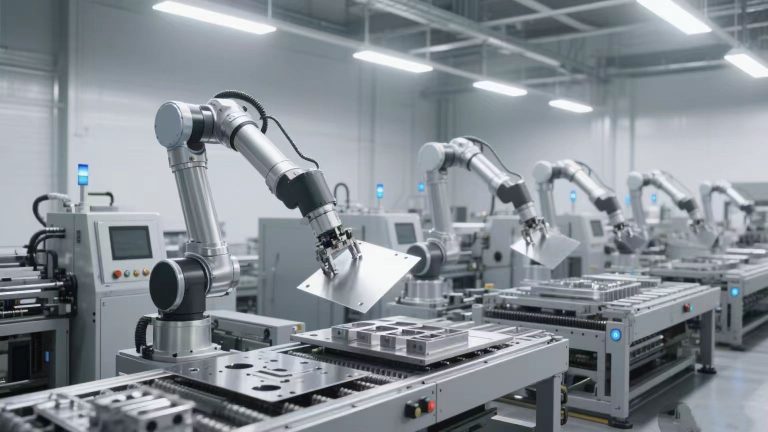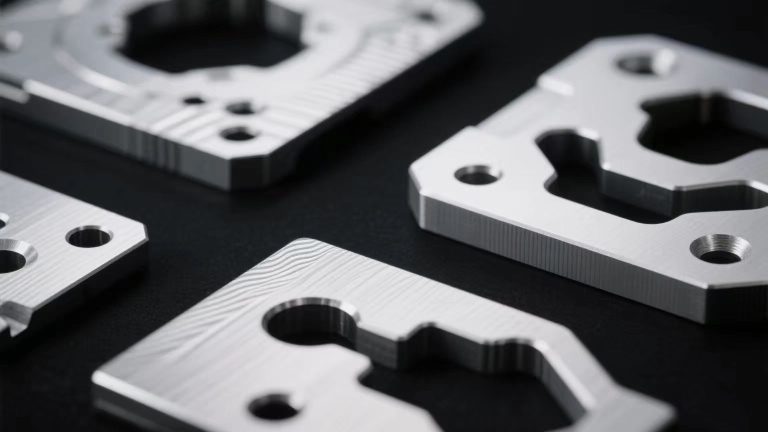Proceso completo de fabricación de chapa metálica de acero inoxidable/aleación de aluminio
In modern industrial production, sheet metal processing is a crucial process. It is widely used in electronics, automotive, machinery, communications and many other fields. Professional sheet metal processing manufacturers can provide customers with one-stop services from raw material selection to finished product assembly. In the entire processing process, precision sheet metal fabrication and sheet metal laser cutting are undoubtedly the core links. They directly determine the quality, precision and production efficiency of products. Next, we will detail the entire process of stainless steel/aluminum alloy sheet metal processing. We will see how professional manufacturers create high-quality sheet metal products through standardized operations and advanced technologies.
Raw Material Selection: Lay the Foundation for High-Quality Processing and Select Suitable Plates
The quality of raw materials is the first threshold for sheet metal processing. When selecting plates, professional manufacturers will strictly screen appropriate stainless steel or aluminum alloy plates according to customer needs and product usage scenarios. For stainless steel plates, 304 sheet metal is one of the most commonly used types. It has good corrosion resistance, heat resistance and processing performance. It is suitable for making various structural parts and decorative parts with high requirements. Among aluminum alloy plates, 6061 sheet metal has become the first choice in aerospace, automotive parts and other fields due to its high strength, easy welding and heat treatment strengthening advantages.
At the same time, manufacturers will cooperate with regular stainless steel sheet metal suppliers and aluminum sheet metal suppliers. This ensures that the purchased plates meet relevant national standards and avoids subsequent processing problems caused by poor raw material quality. During the selection process, staff will carefully check various indicators of the plates, such as surface flatness, thickness deviation and chemical composition. Only plates that pass strict inspections can enter the next processing link. This simple step is the foundation for the smooth development of precision sheet metal fabrication. High-quality plates can reduce errors in the processing process and improve product qualification rates.
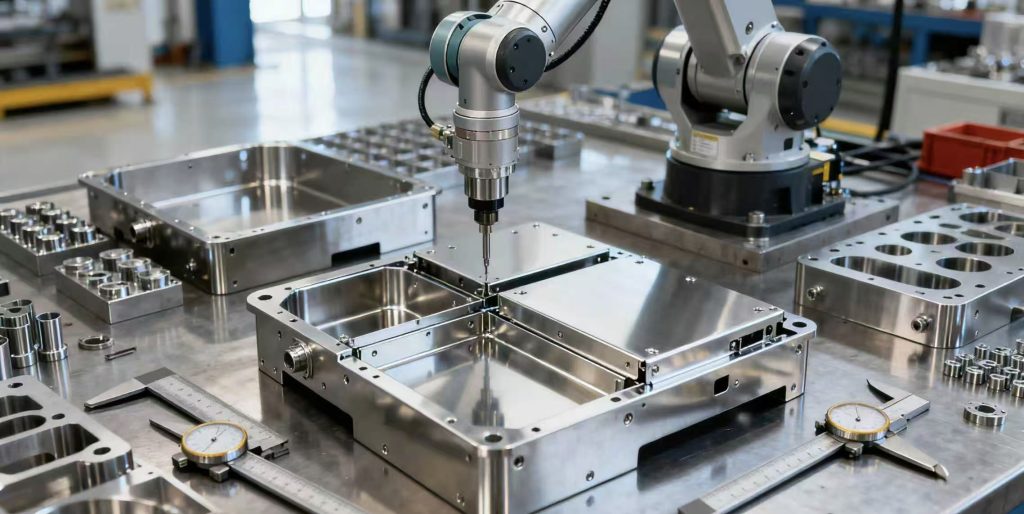
Sheet Metal Laser Cutting: Efficient and Precise Blanking, Sheet Metal Laser Cutting Becomes the Core Method
Introduction: Blanking in Sheet Metal Processing and the Rise of Laser Cutting
Blanking is a key step in sheet metal processing. Its purpose is to cut raw materials into blanks of design dimensions. In traditional blanking processes, methods such as sawing and shearing are not only inefficient but also difficult to ensure precision. With the development of technology, sheet metal laser cutting has become the core blanking method for professional manufacturers.
Core Advantages of Sheet Metal Laser Cutting
Sheet metal laser cutting uses a high-energy density laser beam to cut plates. It boasts numerous advantages, including fast cutting speed, high precision, smooth cuts and a small heat-affected zone. Additionally, it can easily cut various materials such as stainless steel and aluminum alloy, while accurately handling both simple straight-line cutting and complex curve and special-shaped part cutting.
Sheet Metal Laser Cutting Process: From Programming to Customization
When performing sheet metal laser cutting, professional manufacturers will input the cutting path into the laser cutting equipment through computer programming according to the customer’s design drawings. The equipment will automatically cut according to the programmed path. For customers who need personalized processing, manufacturers can also provide custom cut metal services. They can complete custom metal cutting tasks according to customers’ special needs, such as cutting custom metal brackets or laser cut steel panels of specific shapes. During the cutting process, staff will monitor the operation status of the equipment in real time. They ensure that the cutting dimension error is controlled within ±0.1mm. Precise cutting also provides strong support for subsequent precision sheet metal fabrication.
Key Details: Raw Material Utilization and Precision Control
It is worth noting that during the sheet metal laser cutting process, manufacturers also pay attention to the utilization rate of raw materials. They use optimized nesting software to reasonably arrange parts of different sizes on the plates. This reduces waste generation and production costs.
Equipment Maintenance: Guaranteeing Stability and Continuity
At the same time, the maintenance of laser cutting equipment is also crucial. Professional manufacturers will regularly inspect and maintain the equipment. They ensure that components such as the laser head, guide rails and cooling system can operate normally. This ensures the stability and continuity of sheet metal laser cutting.
Bending Forming: Shape the Three-Dimensional Structure of Products and Ensure Precision with Professional Equipment
After laser cutting, we use bending forming technology to shape the blanks into semi-finished products with three-dimensional structures. Jet sheet metal brake is one of the commonly used equipment in this process. It can apply a certain pressure to the sheet metal parts through hydraulic transmission or mechanical transmission. It bends the sheet metal into specific angles and shapes according to design requirements. In this process, operators of professional manufacturers will adjust parameters such as the pressure, bending speed and lower die groove width of the bending machine according to the bending needs of the product. They ensure that the angle of each bending part is accurate and the arc is smooth.
In the bending forming process, the concept of precision sheet metal fabrication runs through. Operators first conduct a trial bend on the first product. They measure the size and angle after bending and compare them with the design drawings. If there is a deviation, they will adjust the parameters in time. Mass production will be carried out only after meeting the requirements. For some products with complex structures, multiple bendings may be required to complete. This requires operators to have rich experience and exquisite technology. This avoids product deformation or damage caused by improper operation. In addition, manufacturers will conduct strict inspections on the semi-finished products after bending. They check their dimensional accuracy, appearance quality, etc. This ensures compliance with the standards of precision sheet metal fabrication and prepares for subsequent welding, assembly and other processes.
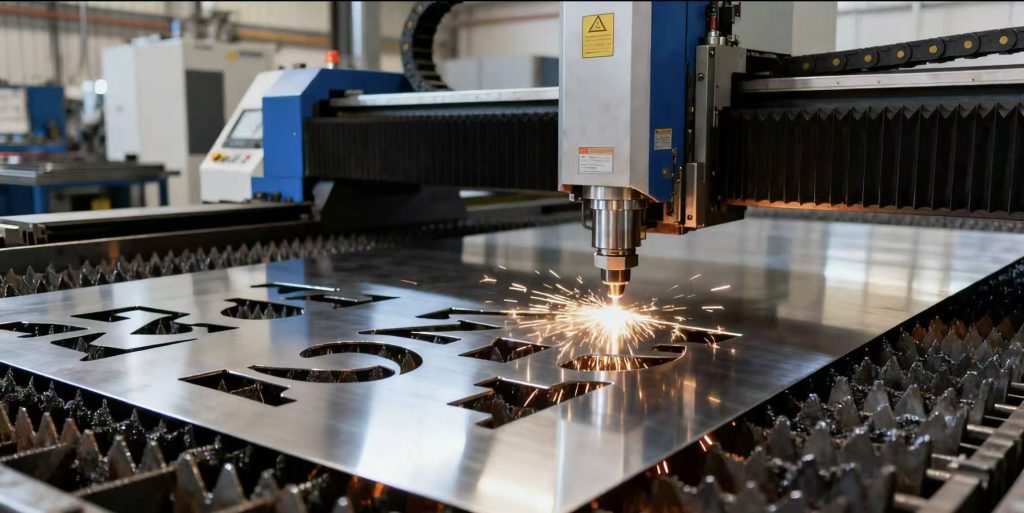
Welding and Grinding: Strengthen Structural Stability and Improve Product Appearance Texture
For sheet metal parts that need to be spliced, welding is an indispensable process. It connects multiple components into a whole and enhances the structural stability of the product. Professional manufacturers will also choose appropriate welding methods according to the material and thickness of the sheet metal parts, such as argon arc welding, carbon dioxide gas shielded welding, resistance welding, etc. During the welding process, operators will strictly control parameters such as welding current, voltage and welding speed. They ensure that the weld is flat and firm and avoid defects such as pores, cracks and incomplete penetration.
After welding, some weld scars, burrs, etc. may remain on the product surface. This requires manufacturers to perform grinding treatment. Grinding can not only remove surface defects but also improve the appearance texture of the product. It makes the product more in line with customers’ aesthetic needs. During the grinding process, staff will use tools such as angle grinders and sandpaper to carefully grind the welding parts and product surfaces until the surfaces become smooth and flat. For products with higher appearance requirements, manufacturers will also perform polishing treatment to make the product surfaces show a bright luster. Although this step is very cumbersome, it is an important part of improving product quality. It is also an indispensable part of precision sheet metal fabrication. This process can make the product more competitive in terms of performance and appearance.
Surface Treatment: Enhance Product Weather Resistance and Extend Service Life
Surface treatment can effectively improve the corrosion resistance, wear resistance and decoration of sheet metal products. This extends the service life of the products. Common surface treatment methods include electroplating, passivation, spraying, anodizing, etc. Professional manufacturers will choose appropriate surface treatment processes according to the product’s materials and service environment. For example, anodizing is the most commonly used treatment method for aluminum alloy sheet metal parts. It can form a dense oxide film on the product surface. It not only has good corrosion resistance but also can be dyed into different colors according to customer needs. For stainless steel sheet metal parts, passivation treatment can further improve their corrosion resistance. It allows them to maintain good performance in harsh environments such as humidity, acid and alkali.
During the surface treatment process, manufacturers will strictly control parameters such as treatment temperature, time and chemical concentration. They ensure that the treatment effect is uniform and stable. In addition, the products after surface treatment will undergo strict inspections. They check the adhesion, thickness, color difference and other indicators of the coating to ensure they meet customer requirements. Reasonable surface treatment not only improves product performance but also makes the product more attractive in appearance. It adds highlights to the final results of precision sheet metal fabrication.
Finished Product Assembly and Inspection: Complete Assembly in One Stop and Strictly Control the Final Quality
After all components have been processed and surface treated, they enter the final finished product assembly link. Professional manufacturers will assemble each component in a certain order and requirements according to the product’s assembly drawings. They ensure that the cooperation between components is precise and the connection is firm. During the assembly process, staff will use professional tools and equipment, such as screwdrivers, wrenches, torque wrenches, etc. They strictly operate according to the assembly process requirements to avoid product functional failure caused by improper assembly.
After assembly, manufacturers will conduct a comprehensive inspection of the finished products. This is the last barrier of precision sheet metal fabrication. The inspection covers many aspects, including product dimensional accuracy, appearance quality, functional performance, etc. In terms of dimensional accuracy, we use tools such as calipers, micrometers and coordinate measuring machines to check whether the key dimensions of the product meet the design requirements. In terms of appearance quality, it will check whether there are scratches, deformations, color differences and other defects on the product surface.In terms of functional performance, we conduct high-temperature resistance testing, load testing, corrosion resistance testing, etc., based on the product’s usage scenario to ensure the normal use of the final product.
Only products that pass all inspection items can be identified as qualified products and delivered to customers. Throughout the inspection process, the standards of precision sheet metal fabrication are always the core for measuring product quality. Professional manufacturers will treat each inspection link carefully with a rigorous attitude. They ensure that every product provided to customers is of high quality and precision.
Contact Us: Vanmodel Sheet Metal, Your Professional Sheet Metal Processing Partner
Through the above detailed breakdown of the entire process of stainless steel/aluminum alloy sheet metal processing, we believe everyone has a clearer understanding of the processing capabilities and standardized operations of professional manufacturers. In the entire processing process, precision sheet metal fabrication is always the core standard. Sheet metal laser cutting is the key technology to ensure processing precision and efficiency. In addition, the reasonable application of links and materials such as custom cut metal, 304 sheet metal and 6061 sheet metal also provides strong support for the birth of high-quality products.
If you have sheet metal processing needs, whether you need custom sheet metal enclosures, custom metal enclosures, or other types of custom metal plate processing, Vanmodel Sheet Metal can provide you with professional and efficient solutions. We have advanced sheet metal machinery, an experienced technical team and a complete quality control system. We can ensure that every processing task meets the standards of precision sheet metal fabrication.
Now, please contact Vanmodel Sheet Metal immediately! You can communicate with us through the contact information on our company website. We will formulate a detailed processing plan according to your needs and provide thoughtful after-sales service. Choose Vanmodel Sheet Metal to perfectly meet your sheet metal processing needs!
For further information, please click on the link below:
https://vanmodel-sheetmetal.com/wp-admin/post.php?post=2941&action=edit



